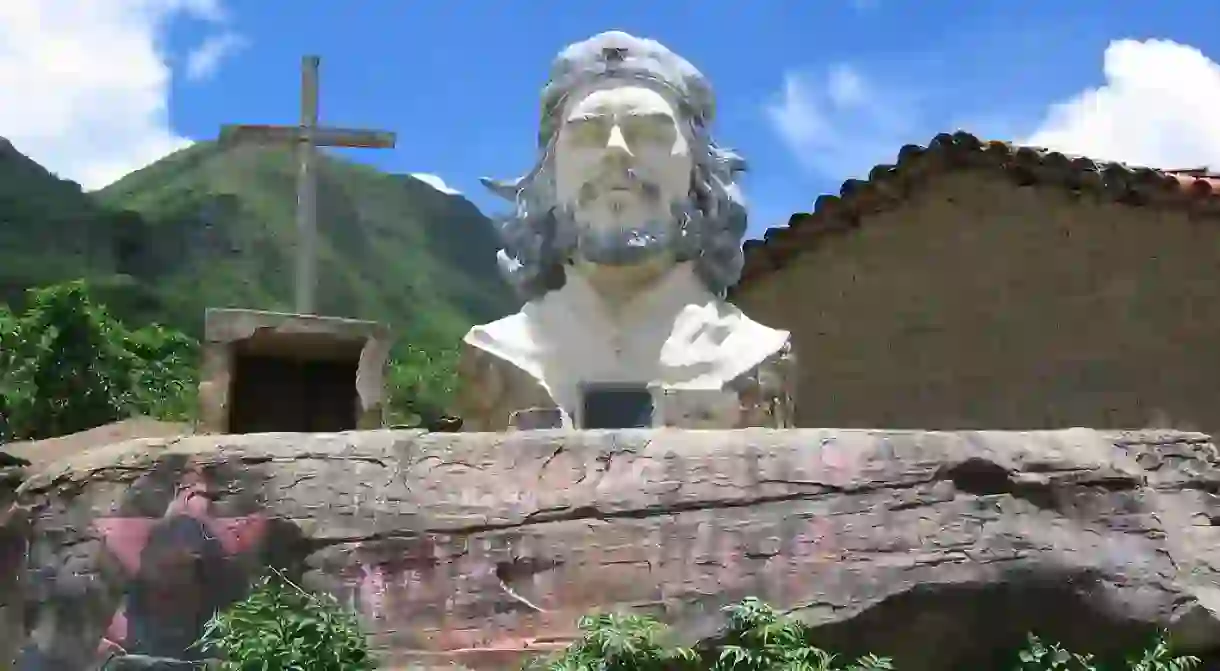The Che Guevara Statue: What to Know About Bolivia's Most Controversial Sculpture

In the central Bolivian town of La Higuera, a statue erected in 1997 marks the spot where the infamous Argentine Marxist Revolutionary Ernesto ”Che” Guevara was eventually captured and killed. To the local townsfolk, Santo Ernesto (Saint Ernesto) was a hero, a man who paid the ultimate sacrifice while battling to free them from the shackles of oppression. To others, he was a ruthless tyrant undeserving of memorial or praise.
To understand why Guevara is such a controversial figure, it is necessary to take a look at his past. As a young man from a middle-class family, he deferred from his medical degree in Argentina to explore South America. On these journeys, he saw the human misery caused by poverty first hand, in his eyes the result of a failed capitalist system that oppresses the masses. His travels were a harrowing and profound experience, later inspiring the famous Motorcycle Diaries – memories which would shape his political views forever.

Guevara’s activism and travels throughout the continent continued as his political views solidified. Eventually he found himself in Guatemala supporting Jacobo Árbenz, the country’s democratically elected socialist president who was attempting to implement large scale agrarian reform. Árbenz intended to redistribute huge areas of uncultivated land away from the United Fruit Company, a large U.S. corporation, and into the hands of the country’s most impoverished farmers. Seeing this as an attack on their national interests, the United States intervened with widespread propaganda, bombing missions and a sizable mercenary army. The Americans were successful. Árbenz was forced to resign and Guevara took refuge in the Argentine Embassy out of fear for his life.

After becoming further radicalized by the events in Guatemala, Guevara made close ties with Fidel Castro in the formative years of the Cuban revolution. He was determined to help rid the country of Fulgencio Batista, a brutal U.S. backed dictator who ruled with an iron fist. Guevara originally enlisted as a combat medic, a field in which he was well trained, but later mastered the art of guerrilla warfare and became one of the revolution’s most revered leaders. After several years of violent struggle, the revolution was triumphant. Castro became the new president while Guevara worked in various high ranking positions within the newly formed government.

It was during this time that Guevara’s actions were most controversial. He personally trained militia that would later assist the Soviets in bringing nuclear warheads within easy reach of the United States. This started a tense standoff known as the Cuban Missile Crisis, a near catastrophic event from which diplomatic relations have never fully recovered. However, the incident that many of Guevara’s detractors refer to is the large scale execution of former Batistasupporters who the new government considered to be enemies of the state. On this occasion, men said to number in their hundreds were lined up and shot without mercy or compassion.

Supporters of Guevara argue revolutions are inherently violent and mass executions are an unfortunate but necessary byproduct of the process. They point out that George Washington and Simon Bolivar oversaw the death of many men in an equally ruthless fashion, yet are rarely branded as tyrants in the history books. Many advocates, including people as illustrious as Nelson Mandela and Pablo Neruda, praise Guevara for his tireless struggle for economic equality and social justice.
So do the ends really justify the brutal means? Some think so, while others would passionately disagree. But for the modest townsfolk of La Higuera, his sacrifice while battling against the repressive imperialists of the time will forever earn him the moniker of Santo Ernesto.













